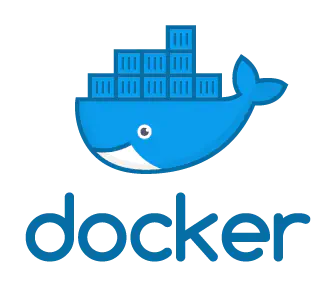My Docker Cheat Sheet
Essential docker commands.
 Docker logo
Docker logo
Docker Cheat Sheet
Build and run a docker image
Build docker images from docker file, goto dockerfile directory and command:
docker build -t friendlynginx .
Run docker image from locally built image
docker run -d -p 50053:8088 friendlynginx
# -d for running it in background //50053:8088 is the exposed port
Connect with docker hub and push to directory, a directory maruftuhin/nginx is created i docker hub at first, then login
docker login
docker tag friendlynginx maruftuhin/nginx:tag
docker push maruftuhin/nginx
Pull image from docker hub:
docker pull maruftuhin/nginx:tag
Run image using tag , [if locally unavailable, it pulls from online]
docker run -p -d 4000:8088 maruftuhin/nginx:tag
List of images and containers
List of images
docker images
List all exited containers
docker ps -a -q -f status=exited
List of containers
docker ps -a
# -a for all
Stop/remove a container or image
Stop a container
docker stop <container_id>
Start a exited container
docker start <container id>
Remove an image
docker rmi <image_id>
Remove a container
docker rm <container id>
docker rm <container_name>
Remove more than one image/container
docker rm <container id> <container_id>
Making change in a container/image
Creates a container for a image and enters it directory
docker run -it <image_id> /bin/bash
Insert in a existing container [the container must be UP]
docker exec -it <container_id> bash
# example: docker exec -it ecf1310ac3ed bash
Anything can be installed in that container, example, at first insert into a container and command:
apt-get update
apt-get install fish
apt-get install php #installs latest php
Exit container directory
exit
Creates a image/snapshot of a [may be modified] container
docker commit <container_id> new_id_of_image
Executing container commands
Start a exited container
docker start <container id>
Restart a crashed container
docker restart <contaienr_id>
Start fish in interactive mode
docker exec -it <container_id> fish
Start php inside container
docker exec -it <container_id> php -a
echo "hello world";
exit
Names of conatiners or Images
Rename existing container
docker rename <old_name> new_name
Giving the container a name, while rnning it
docker run -it --name newName <container_id> bash
Copy files from a container
Create a text file inside container. insert the container and command:
touch test.txt
Copy from container. Exit from container and command:
docker cp containerName:/test.txt . #copies test.txt to host root
Copy into container
docker cp ./test1.txt containerName:/
Container hostnames
Gives a new hostname to the container. it doesn’t change the Names of container. but when user is inside the container, it sees the hostname, in this case, it’s root@test.
docker run -it -h test.local <image_id> bash
Handling volumes
It links between a directory of host and directory of container. in command, left side of “:” defines the source of host direcotry and right side defines destination into container.In this case, changing in ~/data of directory of host machine also takes place changing in container automatically
Bind mounts, the pasth is absolute here
docker run -it --name test21 -v ~/data:/data <image_id> bash
Volume help
docker volume --help
Inspect a docker container
docker inspect <container_id>
Named volume [non-bind mount], here the path is not absolute
docker run -it -v data:/data <container_id> bash
Used volumes of local machine in container
docker volume ls
If same volume is used in another container, they will share the volume.
docker run -it -v data:/data <container_id> bash //shares previous data volume
Remove docker volume, volume_name is available in docker volume ls
docker volume rm <volume_name>
Multiple volume
docker run -it -v data:/data -v myBin:/myBin <container_id> bash
Copy volume from another container
docker run -it --name slave --volume-from <master_container_id/Name> <image_id> bash
Inspect docker volume
docker volume inspect <volume_name>
Show danglisg volumes [not used by any container]
docker volume ls -f dangling=true
Remove one volume that is not used
docker volume rm <volume name>
Removing all unsed volumes
docker volume prune
Anonymous volume. –rm will delete anonymous volume after remove container. here /foo is a anonymous volume
docker run --rm -v /foo -v awesome:/bar busybox top
Untagged Images
Show untagged images
docker images -f "dangling=true" -q
Delete all untagged images
docker images -f "dangling=true" -q | xargs docker rmi
Delete multiple images
Delete images of same name
docker images --format '{{.Repository}}:{{.Tag}}' | grep 'imagename' | xargs docker rmi
# or,
docker images -q imagename | uniq | xargs docker rmi --force
Docker killer!!! :P
Stop all container
docker ps -a -q | xargs docker stop
Delete all container
docker ps -a -q | xargs docker rm
Removing all unused volumes
docker volume prune
Remove untagged dockers
docker images -q -f "dangling=true" | xargs docker rmi
Remove stopped containers
docker ps -aq --no-trunc -f status=exited | xargs docker rm
Remove all images
docker images -q | xargs docker rmi
Start fresh
Dangerous!!! Deletes everything!!
sudo systemctl stop docker.service
sudo rm -rf /var/lib/docker
sudo systemctl start docker.service
Copy Local images to Minikube
For bash
docker save <image-name> | pv | (eval $(minikube docker-env) && docker load)
# or,
docker save <image-name> | (eval $(minikube docker-env) && docker load)